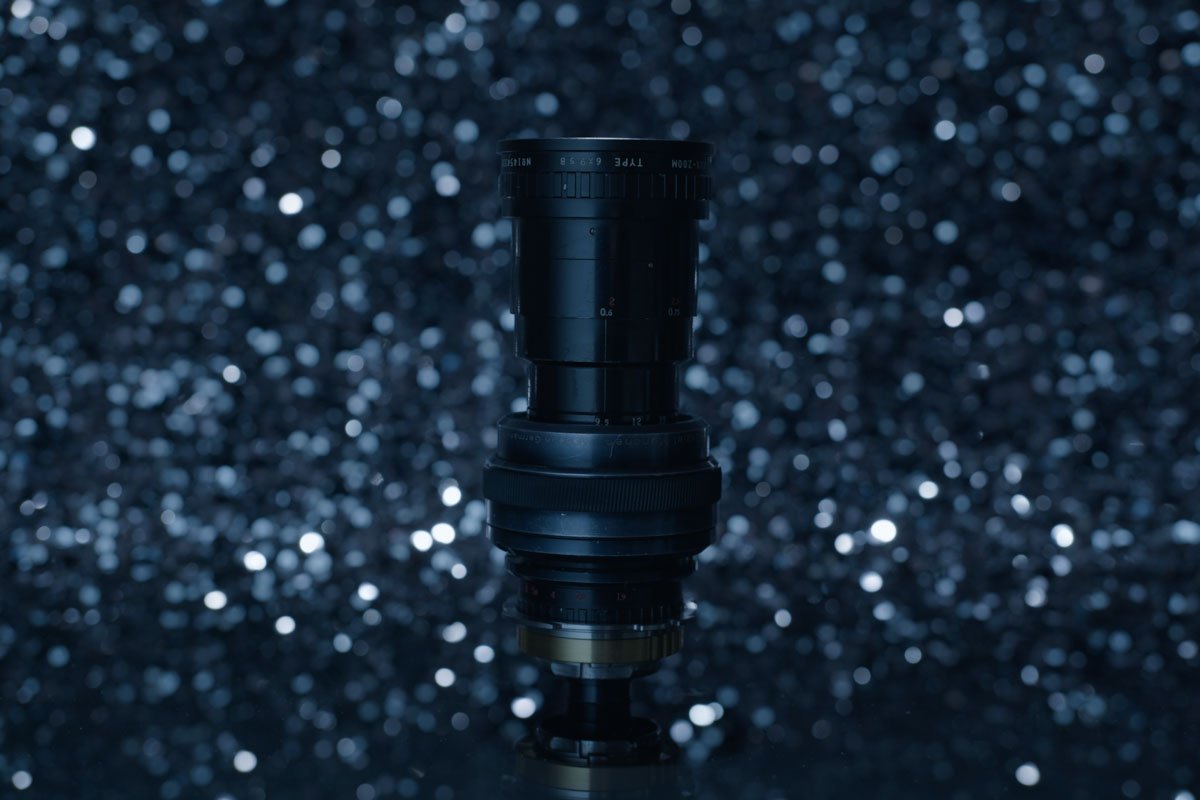 Image 1 of
Image 1 of


Zoom Angénieux 9,5-57
If you’re looking for a fast, lightweight vintage 16mm zoom lens you’re on the perfect page. The fluid zoom add-on is a blessing for any on the go manual zoom.
This zoom is the evolution of the 9,5-95mm T1.9 as specified in our bible, “The Cine Lens Manual” from J. Holben and C. Probst :
The 9.5-95mm received an upgrade in 1971 to the significantly faster but shorter range 9.5-57mm T1.9-2.4 zoom. This lens was used by director Werner Herzog on the documentary La Soufrière - Waiting for an Inevitable Disaster, 1977, c. Edward Lachman.
Angénieux's long history with cinema zooms actually starts with the 16mm format and the first prototype Type L1 17-68mm f12.2 created in 1956, which was brought into production the following year for Bell & Howell. The very first production of Angénieux 16mm zooms were sold in 1958, and between then and the 1970s over 70,000 models were sold.
In the early days of Angénieux's lens manufacturing, calculations for the optical prescriptions had to be done by hand and the math for a four or five-element lens could take as long as two years for two engineers to determine.
Angénieux's namesake founder, Pierre, bought his first electronic calculator in 1956 (and later his first IBM computer in 1969), both of which aided in those calculations. Still, to make the design of complicated multi-element zoom lenses a faster process, Angénieux had mathematical tables prepared for the engineers by an accountant.
If you’re looking for a fast, lightweight vintage 16mm zoom lens you’re on the perfect page. The fluid zoom add-on is a blessing for any on the go manual zoom.
This zoom is the evolution of the 9,5-95mm T1.9 as specified in our bible, “The Cine Lens Manual” from J. Holben and C. Probst :
The 9.5-95mm received an upgrade in 1971 to the significantly faster but shorter range 9.5-57mm T1.9-2.4 zoom. This lens was used by director Werner Herzog on the documentary La Soufrière - Waiting for an Inevitable Disaster, 1977, c. Edward Lachman.
Angénieux's long history with cinema zooms actually starts with the 16mm format and the first prototype Type L1 17-68mm f12.2 created in 1956, which was brought into production the following year for Bell & Howell. The very first production of Angénieux 16mm zooms were sold in 1958, and between then and the 1970s over 70,000 models were sold.
In the early days of Angénieux's lens manufacturing, calculations for the optical prescriptions had to be done by hand and the math for a four or five-element lens could take as long as two years for two engineers to determine.
Angénieux's namesake founder, Pierre, bought his first electronic calculator in 1956 (and later his first IBM computer in 1969), both of which aided in those calculations. Still, to make the design of complicated multi-element zoom lenses a faster process, Angénieux had mathematical tables prepared for the engineers by an accountant.
If you’re looking for a fast, lightweight vintage 16mm zoom lens you’re on the perfect page. The fluid zoom add-on is a blessing for any on the go manual zoom.
This zoom is the evolution of the 9,5-95mm T1.9 as specified in our bible, “The Cine Lens Manual” from J. Holben and C. Probst :
The 9.5-95mm received an upgrade in 1971 to the significantly faster but shorter range 9.5-57mm T1.9-2.4 zoom. This lens was used by director Werner Herzog on the documentary La Soufrière - Waiting for an Inevitable Disaster, 1977, c. Edward Lachman.
Angénieux's long history with cinema zooms actually starts with the 16mm format and the first prototype Type L1 17-68mm f12.2 created in 1956, which was brought into production the following year for Bell & Howell. The very first production of Angénieux 16mm zooms were sold in 1958, and between then and the 1970s over 70,000 models were sold.
In the early days of Angénieux's lens manufacturing, calculations for the optical prescriptions had to be done by hand and the math for a four or five-element lens could take as long as two years for two engineers to determine.
Angénieux's namesake founder, Pierre, bought his first electronic calculator in 1956 (and later his first IBM computer in 1969), both of which aided in those calculations. Still, to make the design of complicated multi-element zoom lenses a faster process, Angénieux had mathematical tables prepared for the engineers by an accountant.
Tech Specs

Samples

Documentaire - Folon








